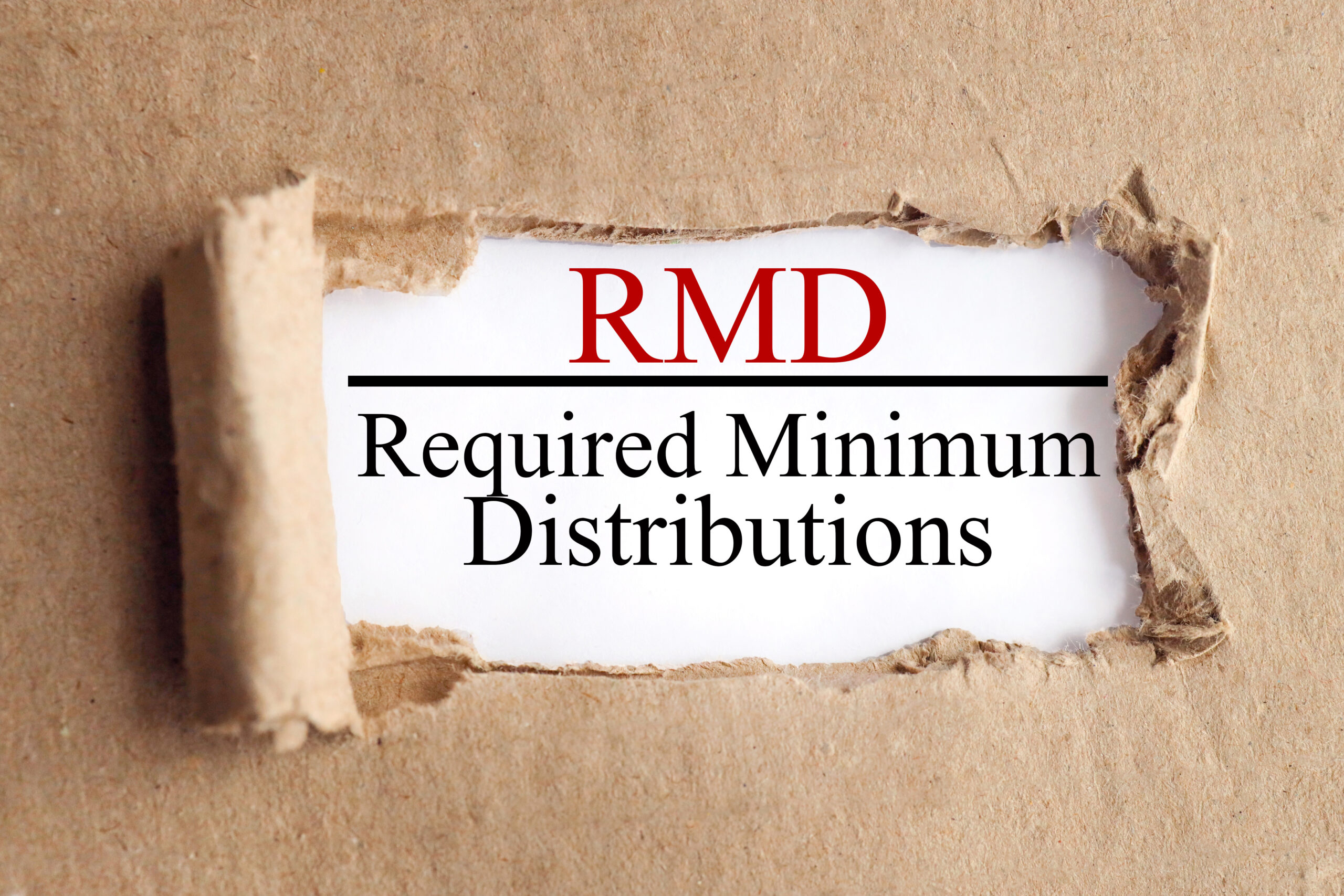Individual Taxpayers: The Year in Review
As we close out the year and get ready for tax season, here’s what individuals and families need to know about tax provisions for 2022.
Personal Exemptions
Personal exemptions are eliminated for tax years 2018 through 2025.
Standard Deductions
The standard deduction for married couples filing a joint return in 2022 is $25,900. For singles and married individuals filing separately, it is $12,950, and for heads of household, the deduction is $19,400.
The additional standard deduction for blind people and senior citizens in 2022 is $1,400 for married individuals and $1,750 for singles and heads of households.
Income Tax Rates
In 2022 the top tax rate of 37 percent affects individuals whose income exceeds $539,900 ($647,850 for married taxpayers filing a joint return). Marginal tax rates for 2022 are as follows: 10%, 12%, 22%, 24%, 32%, 35%, and 37%. As a reminder, while the tax rate structure remained similar to prior years under tax reform (i.e., with seven tax brackets), the tax-bracket thresholds increased significantly for each filing status.
Estate and Gift Taxes
In 2022 there is an exemption of $12.06 million per individual for estate, gift, and generation-skipping taxes, with a top tax rate of 40 percent. The annual exclusion for gifts is $16,000.
Alternative Minimum Tax (AMT)
For 2022, exemption amounts increased to $75,900 for single and head of household filers, $118,100 for married people filing jointly and for qualifying widows or widowers, and $59,050 for married taxpayers filing separately.
Pease and PEP (Personal Exemption Phaseout)
Both Pease (limitations on itemized deductions) and PEP (personal exemption phase-out) have been eliminated under TCJA.
Flexible Spending Account (FSA)
A Flexible Spending Account (FSA) is limited to $2,850 per year in 2022 and applies only to salary reduction contributions under a health FSA. The term “taxable year” as it applies to FSAs refers to the plan year of the cafeteria plan, which is typically the period during which salary reduction elections are made.
Long-Term Capital Gains
In 2022 tax rates on capital gains and dividends remain the same as 2021 rates (0%, 15%, and a top rate of 20%); however, taxpayers should be reminded that threshold amounts don’t correspond to the tax bracket rate structure as they have in the past. For example, taxpayers whose income is below $41,675 for single filers and $83,350 for married filing jointly pay 0% capital gains tax. For individuals whose income is at or above $459,750 ($517,200 married filing jointly), the rate for both capital gains and dividends is capped at 20 percent.
Miscellaneous Deductions
Miscellaneous deductions that exceed 2 percent of AGI (adjusted gross income) are eliminated for tax years 2018 through 2025. As such, you can no longer deduct on Schedule A expenses related to tax preparation, moving (except for members of the Armed Forces on active duty who move because of a military order), job hunting, or unreimbursed employee expenses such as tools, supplies, required uniforms, travel, and mileage.
Business owners are not affected and can still deduct business-related expenses on Schedule C.
Individuals – Tax Credits
Adoption Credit
In 2022 a nonrefundable (i.e., only those with tax liability will benefit) credit of up to $14,890 is available for qualified adoption expenses for each eligible child.
Child and Dependent Care Credit
If you pay someone to take care of your dependent (defined as being under the age of 13 at the end of the tax year or incapable of self-care) to work or look for work, you may qualify for a credit of up to $1,050 or 35 percent of $3,000 of eligible expenses in 2022. For two or more qualifying dependents, you can claim up to 35 percent of $6,000 (or $2,100) of eligible expenses. For higher-income earners, the credit percentage is reduced, but not below 20 percent, regardless of the amount of adjusted gross income. This tax credit is nonrefundable.
Child Tax Credit and Credit for Other Dependents
For 2022, the child tax credit reverts to $2,000 per child, under the age of 17. The refundable portion of the credit is $1,400 in 2022, so that even if taxpayers do not owe any tax, they can still claim the credit. A $500 nonrefundable credit is also available for dependents who do not qualify for the Child Tax Credit (e.g., dependents age 17 and older).
Earned Income Tax Credit (EITC)
For the tax year 2022, the maximum earned income tax credit (EITC) for low, and moderate-income workers and working families increased to $6,935 (up from $6,728 in 2021). For taxpayers with no qualifying children, the maximum credit is $560.
The maximum income limit (three or more qualifying children) for the EITC increased to $59,187 (up from $57,414 in 2021) for married filing jointly and $53,057 for taxpayers whose filing status is single or head of household. The credit varies by family size, filing status, and other factors, with the maximum credit going to joint filers with three or more qualifying children.
Individuals – Education Expenses
Coverdell Education Savings Account
You can contribute up to $2,000 a year to Coverdell savings accounts in 2022. These accounts can be used to offset the cost of elementary and secondary education, as well as post-secondary education.
American Opportunity Tax Credit and Lifetime Learning Credit
The maximum credit is $2,500 per student for the American Opportunity Tax Credit. The Lifetime Learning Credit remains at $2,000 per return. To claim the full credit for either, your modified adjusted gross income (MAGI) must be $80,000 or less ($160,000 or less for married filing jointly).
Employer-Provided Educational Assistance
As an employee in 2022, you can exclude up to $5,250 of qualifying postsecondary and graduate education expenses that are reimbursed by your employer.
Student Loan Interest
In 2022, you can deduct up to $2,500 in student-loan interest as long as your modified adjusted gross income is less than $70,000 (single) or $140,000 (married filing jointly). The credit cannot be claimed if your modified adjusted gross income (MAGI) is more than $85,000 for single filers ($170,000 if married filing jointly).
Individuals – Retirement
Contribution Limits
For 2022, the elective deferral (contribution) limit for employees who participate in 401(k), 403(b), most 457 plans, and the federal government’s Thrift Savings Plan is $20,500. For persons age 50 or older in 2022, the limit is $27,000 ($6,500 catch-up contribution).
Retirement Savings Contributions Credit (Saver’s Credit)
In 2022, the adjusted gross income limit for the saver’s credit for low and moderate-income workers is $68,000 for married couples filing jointly, $51,000 for heads of household, and $34,000 for married individuals filing separately and for singles. The maximum credit amount is $2,000 ($4,000 if married filing jointly). As a reminder, starting in 2018, the Saver’s Credit can be taken for your contributions to an ABLE (Achieving a Better Life Experience) account if you’re the designated beneficiary. However, keep in mind that your eligible contributions may be reduced by any recent distributions you received from your ABLE account.
If you have any questions about these and other tax provisions that could affect your tax situation, don’t hesitate to call.
Small Business Taxpayers: The Year in Review
Here’s what business owners need to know about tax provisions for 2022:
Standard Mileage Rates
Due to inflation, there were two standard mileage rates in 2022: 62.5 cents per business mile driven (July 1-December 31, 2022) and 58.5 per business mile driven (January 1-June 30, 2022).
Health Care Tax Credit for Small Businesses
Small business employers who pay at least half the premiums for single health insurance coverage for their employees may be eligible for the Small Business Health Care Tax Credit as long as they employ fewer than the equivalent of 25 full-time workers and average annual wages do not exceed $50,000. This amount is adjusted annually for inflation (e.g., for 2021 returns it was $56,000).
In 2022, the tax credit is worth up to 50 percent of your contribution toward employees’ premium costs (up to 35 percent for tax-exempt employers).
Section 179 Expensing and Depreciation
for 2022, the Section 179 expense deduction increased to a maximum deduction of $1.08 million of the first $2.70 million of qualifying equipment placed in service during the current tax year. The deduction is indexed to inflation for tax years after 2018 and enhanced to include improvements to nonresidential qualified real property such as roofs, fire protection, alarm systems and security systems, and heating, ventilation, and air-conditioning systems.
Businesses are allowed to immediately deduct 100% of the cost of eligible property placed in service after September 27, 2017, and before January 1, 2023, after which it will be phased downward over a four-year period: 80% in 2023, 60% in 2024, 40% in 2025, and 20% in 2026. The standard business depreciation amount is 26 cents per mile (same as 2021).
Work Opportunity Tax Credit (WOTC)
Extended through 2025 (The Consolidated Appropriations Act, 2021), the Work Opportunity Tax Credit can be used by employers who hire long-term unemployed individuals (unemployed for 27 weeks or more). It is generally equal to 40 percent of the first $6,000 of wages paid to a new hire. Please call if you have any questions about the Work Opportunity Tax Credit.
SIMPLE IRA Plan Contributions
Contribution limits for SIMPLE IRA plans increased to $14,000 for persons under age 50 and $17,000 for persons age 50 or older in 2022. The maximum compensation used to determine contributions is $305,000.
Please contact the office if you would like more information about these and other tax deductions and credits to which you are entitled.
Tips To Avoid Credit Card Debt This Holiday Season
Typically, credit card balances follow a seasonal pattern, increasing significantly in the fourth quarter and coinciding with holiday shopping. This year is no exception; unfortunately, it coincides with higher credit card interest rates. With more people than ever depending on credit cards to cover basic expenses due to inflation, this could lead to an ever-increasing debt load. In fact, credit card balances are approaching pre-pandemic levels, increasing by $38 billion (a 15 percent increase year-over-year) since the second quarter – the largest increase in more than 20 years (Federal Reserve Bank of New York).
Whether you are diligent about paying your credit card in full every month or are still paying down debt from a previous spending spree, these five tips will help you avoid overspending and keep credit card spending on track.
1. Review Your Credit Card Balances
Before you head to your preferred shopping venue, check your credit card balances. There’s nothing like seeing a large debt – or several – to make you think twice about spending. Writing it down has even more of an impact.
2. Control Your Spending
One of the most effective ways of controlling spending is to establish a budget and stick to it – before you head to the store or shop online. For holiday shoppers, setting an overall budget and then researching and compiling a list of items for each person you give a gift to goes a long way toward curbing impulse spending. Alternatively, families and friends can agree to set a maximum amount to spend, such as $25 or $50 per person, decide to do a gift exchange or even give family gifts that benefit all members of the household.
3. Pay Off High-Interest Cards
With the average interest rate hovering around 19 percent, according to Bankrate, if you have multiple credit cards with balances, try to pay off any high-interest credit cards before you spend any more. If you are planning a last-minute holiday shopping spree this year and still have considerable debt on your credit cards, you should avoid opening new store credit cards (average annual percentage rates are now close to 26 percent) and using “buy now, pay later” financing. While these types of credit may seem tempting, you will still be incurring more debt.
4. Pay With Cash or Use a Debit/Credit Card Tied to Your Bank Account
Shoppers tend to spend more when using credit cards than they do when using cash because of the “out of sight, out of mind” mentality. If you are not comfortable carrying large amounts of cash, one alternative is to use a debit/credit card tied to your bank account. When using this type of “credit card,” you need to have the money in your account to cover your purchases as it is not a revolving credit account. If your finances are tight and you are trying to save money, it’s best to use cash for your purchases – even if it means making several trips over a few weeks. It is also easier to keep track of your spending, and you might save a few bucks if the store charges a service fee to its customers for card purchases.
5. Get Help Managing Your Debt
Getting out of debt is a challenge that most people face – often multiple times – during their lifetime, and knowing how to manage debt and negotiate with creditors is a valuable skill that CPAs or other tax professionals can help you with.
If you have any concerns relating to budgeting, interest rates, debt management, or any other issues related to your finances, don’t hesitate to contact the office. As always, help is just a phone call away.
Advertising and Marketing Costs May Be Tax Deductible
As a small business owner, you may be able to deduct advertising and marketing expenses that help bring in new customers and keep existing ones. Even better is that these deductions help small businesses save money on their taxes. Here’s what you need to know about this valuable tax deduction:
Deduction Not Allowed for Lobbying and Political expenses
Generally, small businesses can’t deduct amounts they pay to influence legislation – including advertising in a convention program of a political party or any other publication if any of the proceeds from the publication are for, or intended for, the use of a political party or candidate.
Advertising and Marketing Costs Must Be Ordinary and Necessary
An ordinary expense is one that is common and accepted in the industry. A necessary expense is one that is helpful and appropriate for the trade or business. An expense does not have to be indispensable to be considered necessary. Advertising and marketing costs that are ordinary and necessary are tax-deductible.
Advertising Expenses Include:
- Reasonable advertising expenses that are directly related to the business activities.
- An expense for the cost of institutional or goodwill advertising to keep the business name before the public if it relates to a reasonable expectation to gain business in the future. For example, the cost of advertising that encourages people to contribute to the Red Cross or to participate in similar causes is usually deductible.
- The cost of providing meals, entertainment, or recreational facilities to the public as a means of advertising or promoting goodwill in the community.
Questions?
As always, don’t hesitate to call if you have any questions regarding tax deductions that benefit your small business.
Retirement Contributions Limits Announced for 2023
Cost of living adjustments affecting dollar limitations for pension plans and other retirement-related items for 2023 are as follows:
401(k), 403(b), 457 plans, and Thrift Savings Plan. Contribution limits for employees who participate in 401(k), 403(b), most 457 plans, and the federal government’s Thrift Savings Plan increases to $22,500, up from $20,500. The catch-up contribution limit for employees aged 50 and over increases to $7,500, up from $6,500 in 2022.
SIMPLE Retirement Accounts. Contribution limits for SIMPLE retirement accounts for self-employed persons increases to $15,500, up from $14,000. The catch-up contribution limit for employees aged 50 and over also increases from $3,000 to $3,500.
Traditional IRAs. The limit on annual contributions to an IRA increases to $6,500, up from $6,000. The additional catch-up contribution limit for individuals aged 50 and over is not subject to an annual cost-of-living adjustment and remains $1,000.
Taxpayers can deduct contributions to a traditional IRA if they meet certain conditions. However, suppose during the year, a retirement plan at work covered either the taxpayer or their spouse. In that case, the deduction may be reduced or phased out until it is eliminated, depending on filing status and income. If a retirement plan at work covers neither the taxpayer nor their spouse, the phase-out amounts of the deduction do not apply.
The phase-out ranges for 2023 are as follows:
- For single taxpayers covered by a workplace retirement plan, the phase-out range is $73,000 and $83,000, up from between $68,000 and $78,000.
- For married couples filing jointly, where a workplace retirement plan covers the spouse making the IRA contribution, the phase-out range is $116,000 and $136,000, up from between $109,000 and $129,000.
- For an IRA contributor who is not covered by a workplace retirement plan and is married to someone who is covered, the deduction is phased out if the couple’s income is between $218,000 and $228,000, up from between $204,000 and $214,000.
- For a married individual filing a separate return who is covered by a workplace retirement plan, the phase-out range is not subject to an annual cost-of-living adjustment and remains $0 to $10,000.
Roth IRAs. The income phase-out range for taxpayers making contributions to a Roth IRA is increased to between $138,000 and $153,000 for singles and heads of household (up from between $129,000 and $144,000). For married couples filing jointly, the income phase-out range is increased to between $218,000 and $228,000, up from between $204,000 and $214,000. The phase-out range for a married individual filing a separate return who makes contributions to a Roth IRA is not subject to an annual cost-of-living adjustment and remains between $0 and $10,000.
Saver’s Credit. The income limit for the Saver’s Credit (also known as the Retirement Savings Contributions Credit) for low- and moderate-income workers is $73,000 for married couples filing jointly, up from $68,000; $54,750 for heads of household, up from $51,000; and $36,500 for singles and married individuals filing separately, up from $34,000.
If you have any questions about retirement plan contributions, don’t hesitate to call the office for assistance.
Improperly Forgiven PPP Loans Are Taxable
Recipients of Paycheck Protection Loans (PPP) should be aware that when a taxpayer’s loan is forgiven based upon misrepresentations or omissions, they are not eligible to exclude the forgiveness from income. They must, instead, include in income the portion of the loan proceeds that were forgiven based upon misrepresentations or omissions.
Background
The PPP loan program was established by the Coronavirus Aid, Relief and Economic Security Act (CARES Act) to assist small US businesses that were adversely affected by the COVID-19 pandemic in paying certain expenses. The PPP loan program was further extended by the Economic Aid to Hard-Hit Small Businesses, Nonprofits and Venues Act.
Under the terms of the PPP loan program, lenders can forgive the full amount of the loan if the loan recipient meets three conditions:
1. The loan recipient was eligible to receive the PPP loan. An eligible loan recipient:
- is a small business concern, independent contractor, eligible self-employed individual, sole proprietor, business concern, or a certain type of tax-exempt entity;
- was in business on or before February 15, 2020; and
- had employees or independent contractors who were paid for their services or were self-employed individuals, sole proprietors, or independent contractors.
2. The loan proceeds had to be used to pay eligible expenses, such as payroll costs, rent, interest on the business’ mortgage, and utilities.
3. The loan recipient had to apply for loan forgiveness. The loan forgiveness application requires a loan recipient to attest to eligibility, verify certain financial information, and meet other legal qualifications.
If the three conditions above are met, the forgiven portion is excluded from income under the PPP loan program. If the conditions are not met, then the amount of the loan proceeds that were forgiven but did not meet the conditions must be included in income, and any additional income tax must be paid.
Recipients not meeting eligibility requirements:
Many PPP loan recipients who received loan forgiveness were qualified and used the loan proceeds properly to pay eligible expenses. However, some recipients who received loan forgiveness did not meet one or more eligibility conditions. These recipients received forgiveness of their PPP loan through misrepresentation or omission, and either did not qualify to receive a PPP loan or misused the loan proceeds.
To ensure that all taxpayers pay their fair share of taxes, taxpayers who abuse such programs should be held accountable. To report tax-related illegal activities relating to PPP loans, submit Form 3949-A, Information Referral. Taxpayers should also report instances of IRS-related phishing attempts and fraud to the Treasury Inspector General for Tax Administration at 800-366-4484.
Help is available.
If you are a taxpayer who inappropriately received forgiveness of PPP loans, now is the time to take steps to come into compliance. One way to do this is by filing an amended return(s) that includes forgiven loan proceed amounts as income. If you have questions about this topic, want more information, or need help filing an amended return, please call the office today.
Take Retirement Plan Distributions by December 31
For many years, IRS rules stated that taxpayers could not keep retirement funds in their retirement accounts indefinitely. They must start taking withdrawals from their IRA, SIMPLE IRA, SEP IRA, or retirement plan account when they reach age 70 1/2. These withdrawals are known as required minimum distributions or RMDs.
However, the Setting Every Community Up for Retirement Enment (SECURE Act), enacted into law in 2019, changed the rules. As such, if your 70th birthday is July 1, 2019, or later, you do not have to take withdrawals until you reach age 72. Here’s what taxpayers should know about taking RMDs:
Special rule for first year RMDs.
Generally, taxpayers reaching age 72 after July 1, 2022, must begin taking required minimum distributions before the end of the tax year (December 31). A special rule, however, allows first-year recipients of these payments, those who reached age 72 during 2022, to wait until as late as April 1, 2023, to receive their first RMDs. The advantage of this special rule is that although payments made to these taxpayers in early 2023 (up to April 1, 2023) and can be counted toward their 2022 RMD, they are taxable in 2023.
The special April 1 deadline only applies to the RMD for the first year; for all subsequent years, the RMD must be made by December 31. For example, a taxpayer who turned 72 in 2021 and received the first RMD (for 2021) on April 1, 2022, must still receive a second RMD (for 2022) by December 31, 2022.
Figuring RMDs.
The RMD for 2022 is based on the taxpayer’s life expectancy on December 31, 2022, and their account balance on December 31, 2021. An IRA trustee must either offer to calculate it for the owner or report the amount of the RMD to the IRA owner on Form 5498.
For most taxpayers, the RMD is based on Table III (Uniform Lifetime Table) in IRS Publication 590-B. For example, for a taxpayer who turned 72 in 2021, the required distribution would be based on a life expectancy of 27.4 years. A separate table, Table II, applies to a taxpayer whose spouse is more than ten years younger and is the taxpayer’s only beneficiary. If you need assistance with this, don’t hesitate to call.
Exception to the RMD rules.
Though the RMD rules are mandatory for all owners of traditional, SEP, and SIMPLE IRAs and participants in workplace retirement plans, some people in workplace plans can wait longer to receive their RMDs. Usually, if their plan allows it, employees who are still working can wait until April 1 of the year after they retire to start receiving these distributions. There may, however, be a tax on excess accumulations. Employees of public schools and certain tax-exempt organizations with 403(b) plan accruals before 1987 should check with their employer, plan administrator, or provider to see how to treat these accruals.
Special rules for Roth and inherited IRAs.
Also of note is that Roth IRAs do not require withdrawals until after the owner’s death. There are also special rules for owners of inherited IRAs.
If you have any questions about RMDs or other tax issues, please don’t hesitate to call.
Relief Continues for Drought-stricken Farmers
Farmers and ranchers forced to sell livestock because of drought conditions may have more time to replace their livestock and defer tax on any gains from the forced sales. If you are a farmer or rancher affected by drought conditions, here is what you need to know about this important tax relief extension.
How the extension works:
This extension applies to eligible farmers and ranchers who qualified for the four-year replacement period if they were suffering exceptional, extreme, or severe drought conditions as determined by the National Drought Mitigation Center during any week between September 1, 2021, and August 31, 2022.
Because the normal drought-sale replacement period is four years, this extension impacts drought sales during 2018. As a result, eligible farmers and ranchers with a drought-sale replacement period ending December 31, 2022, now have until the end of their next tax year to replace the sold livestock. The replacement periods for some drought sales (before 2018) are also affected due to previous drought-related extensions affecting some of these localities.
Eligible livestock sales
The sales must be solely due to drought in an area eligible for federal assistance. Farmers and ranchers must replace the livestock within four years instead of the usual two years. If the drought continues, this replacement period may be extended.
The relief generally applies to capital gains realized by eligible farmers and ranchers on sales of livestock held for draft, dairy, or breeding purposes. Sales of other livestock, such as those raised for slaughter or held for sporting purposes or poultry, aren’t eligible.
Regions designated as eligible for federal assistance
The list of areas eligible for federal assistance includes 44 states, two U.S. Territories, and two independent nations in a Compact of Free Association with the United States.
If you are a farmer or rancher affected by drought sales and other farm-related tax issues, help is just a phone call away.
QuickBooks’ Income Tracker: Know Where the Money Is
If you’re a business that sends estimates and invoices to customers, you’re probably used to now knowing where all of your money is allocated at any given time. It’s likely that you have revenue spread across several places and temporarily parked in several QuickBooks locations such as:
- Unresolved estimates
- Unbilled time and expenses
- Open invoices
- Overdue invoices
- Your Undeposited Funds account
Finding Your Funds
There are ways you can look for this money. For example, you could go to the QuickBooks Customer Center (Customers | Customer Center) and click the Transactions tab in the upper left. The pane below it displays a list of transactions, including Invoices, Estimates, and Sales Receipts. Click Invoices, and the window to the right shows you all of your invoices from a specific date range (which you can change).
Click the down arrow in the field to the right of Filter By, and you’ll see that you can view All Invoices, Open Invoices, and Overdue invoices. Double-click on any entry in these lists to see the original transaction.
Figure 2: Please call if you’re not sure how to handle the options in this dialog box.
If you’ve designated the Undeposited Funds account as the destination for payments received (this is the default), you should be checking that account occasionally to see if there’s money that needs to be deposited. Click the Chart of Accounts icon on your QuickBooks home page or go to Lists | Chart of Accounts. Scroll down to and right-click on Undeposited Funds, then click QuickReport: Undeposited Funds. Don’t hesitate to call if you need help understanding this account and how to deal with it.
A Better Solution: QuickBooks’ Income Tracker
There’s a better way to find all of this information (except for Undeposited Funds – you’ll need to go to the Chart of Accounts for that). Your toolbar should have a link for Income Tracker. Either click it or go to Customers | Income Tracker. You’ll see a horizontals toolbar across the top of the page with labels for multiple types of sales transactions: Estimates, Time & Expenses, Open Invoices, Overdue (Invoices), and Paid Last 30 Days. You can see a partial image of the toolbar below. A Regular Practice
A Regular Practice
Opening the Income Tracker frequently is recommended because it will keep you up to date on where all of your money is and, in turn, improve cash flow. It will also alert you to follow up on what you need to do on overdue invoices and unbilled work. Questions on this QuickBooks tool or any of the software’s other operations? Help is just a phone call away.
Tax Due Dates for December 2022
December 12
Employees who work for tips – If you received $20 or more in tips during November, report them to your employer. You can use Form 4070.
December 15
Corporations – Deposit the fourth installment of estimated income tax for 2022. A worksheet, Form 1120-W, is available to help you estimate your tax for the year.
Employers Social Security, Medicare, and withheld income tax – If the monthly deposit rule applies, deposit the tax for payments in November.
Employers Nonpayroll withholding – If the monthly deposit rule applies, deposit the tax for payments in November.
Any accounting, business or tax advice contained in this communication, including attachments and enclosures, is not intended as a thorough, in-depth analysis of specific issues, nor a substitute for a formal opinion, nor is it sufficient to avoid tax-related penalties. If desired, we would be pleased to perform the requisite research and provide you with a detailed written analysis. Such an engagement may be the subject of a separate engagement letter that would define the scope and limits of the desired consultation services.
































